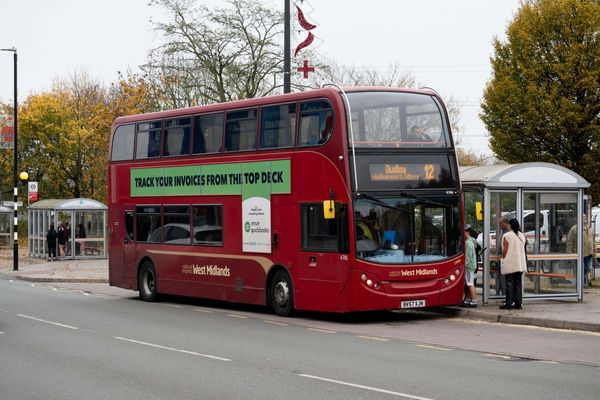
In today's fast-paced world, logistics and delivery services are under constant pressure to meet rising consumer demands. From reducing delivery times to cutting operational costs, the challenges are substantial. Route optimization APIs are emerging as a transformative solution, enabling businesses to streamline operations, improve delivery efficiency, and enhance customer satisfaction. This guide explores how these APIs work, their benefits, and their impact on logistics and delivery industries.
What Are Route Optimization APIs?
Route optimization APIs are software tools that use algorithms to calculate the most efficient routes for deliveries. They factor in various parameters like distance, traffic, delivery time windows, and vehicle capacity to generate optimal routes in real-time.
Key Features:
- Dynamic Route Planning: Adjusts routes based on changing conditions like traffic or road closures.
- Multi-Stop Optimization: Prioritizes delivery points for maximum efficiency.
- Real-Time Updates: Provides live adjustments to routes as conditions change.
- Integration Capabilities: Can be integrated into existing logistics software or mobile applications.
By leveraging advanced technologies such as artificial intelligence (AI) and machine learning (ML), these APIs offer smarter, faster solutions for delivery route planning.
The Role of Route Optimization in Logistics and Delivery
Route optimization is a critical component of modern logistics and delivery operations. Inefficient routing leads to increased fuel costs, wasted time, and lower customer satisfaction. Route optimization APIs address these issues by enabling companies to maximize operational efficiency.
Benefits of Route Optimization APIs
1. Reduced Fuel Costs
Fuel is one of the largest expenses in logistics. Route optimization APIs minimize unnecessary mileage, leading to significant cost savings.
How It Works:
- Selects the shortest or fastest routes.
- Avoids congested areas and traffic delays.
- Considers vehicle-specific factors like fuel efficiency.
This reduction in fuel consumption not only saves money but also contributes to environmental sustainability.
2. Enhanced Delivery Speed and Accuracy
With optimized routes, drivers can deliver packages faster and more accurately, meeting customer expectations for timely deliveries.
Key Advantages:
- Prioritizes time-sensitive deliveries.
- Reduces missed delivery attempts.
- Improves overall logistics efficiency.
By ensuring packages reach their destinations on time, companies can boost customer satisfaction and loyalty.
3. Real-Time Traffic and Weather Adaptability
Unforeseen factors like traffic jams or bad weather can disrupt delivery schedules. Route optimization APIs provide real-time updates to mitigate these challenges.
Features:
- Recalculates routes based on live traffic and weather data.
- Alerts drivers to potential delays.
- Suggests alternative paths to maintain efficiency.
This adaptability ensures that operations remain on track, even under unpredictable circumstances.
4. Improved Fleet Management
Route optimization APIs enable logistics managers to monitor and manage their fleets more effectively. With centralized data, managers can track vehicles, optimize routes, and make informed decisions.
Benefits:
- Maximizes vehicle utilization.
- Balances workloads among drivers.
- Reduces wear and tear on vehicles.
Efficient fleet management lowers operational costs and extends the lifespan of delivery vehicles.
5. Environmental Sustainability
Optimized routes reduce fuel consumption and emissions, making delivery operations more eco-friendly. Companies can integrate sustainability into their business practices while meeting regulatory requirements.
Industries Leveraging Route Optimization APIs
1. E-Commerce
E-commerce giants rely heavily on optimized delivery routes to meet customer demands for fast and free shipping.
2. Food Delivery
Restaurants and delivery services use APIs to ensure hot, fresh meals arrive on time, even during peak hours.
3. Logistics and Freight
Large-scale logistics companies optimize their fleet routes to handle multi-stop deliveries efficiently.
4. Healthcare and Pharmaceuticals
Ensuring timely delivery of medical supplies and prescriptions is critical, making route optimization essential for healthcare logistics.
Key Technologies Powering Route Optimization APIs
1. Artificial Intelligence (AI)
AI algorithms analyze vast amounts of data to create optimal routes in real-time.
2. Machine Learning (ML)
ML models improve route planning by learning from historical data and predicting traffic patterns.
3. GPS and Mapping Technologies
Integration with GPS systems allows APIs to provide accurate and up-to-date routing information.
Case Study: Transforming Delivery Efficiency with Route Optimization
Problem:
A mid-sized logistics company struggled with high fuel costs and delayed deliveries, leading to dissatisfied customers.
Solution:
By integrating a route optimization API, the company:
- Reduced fuel costs by 20%.
- Improved on-time deliveries by 30%.
- Enhanced customer satisfaction ratings.
This transformation showcases the tangible benefits of adopting route optimization technology.
How to Implement Route Optimization APIs
- Identify Your Needs: Determine whether you need multi-stop routing, real-time updates, or specific integrations.
- Choose the Right API: Evaluate APIs based on features, scalability, and cost.
- Integrate with Existing Systems: Ensure seamless integration with your current logistics software.
- Train Staff: Provide drivers and managers with training on how to use the new tools effectively.
- Monitor and Optimize: Continuously analyze performance data to refine your operations further.
The Future of Route Optimization in Logistics
As technology advances, route optimization APIs are becoming more sophisticated, offering features like predictive analytics and autonomous vehicle compatibility. The future of logistics will likely see greater automation and integration, enabling companies to operate with unparalleled efficiency.
Conclusion: Embrace the Power of Route Optimization
Route optimization APIs are revolutionizing logistics and delivery operations by enhancing efficiency, reducing costs, and improving customer satisfaction. For businesses navigating the competitive delivery landscape, adopting these tools is not just an option—it's a necessity. Whether you're in e-commerce, food delivery, or large-scale logistics, integrating route optimization APIs can position your business for long-term success.
Invest in route optimization technology today and transform the way you deliver.







